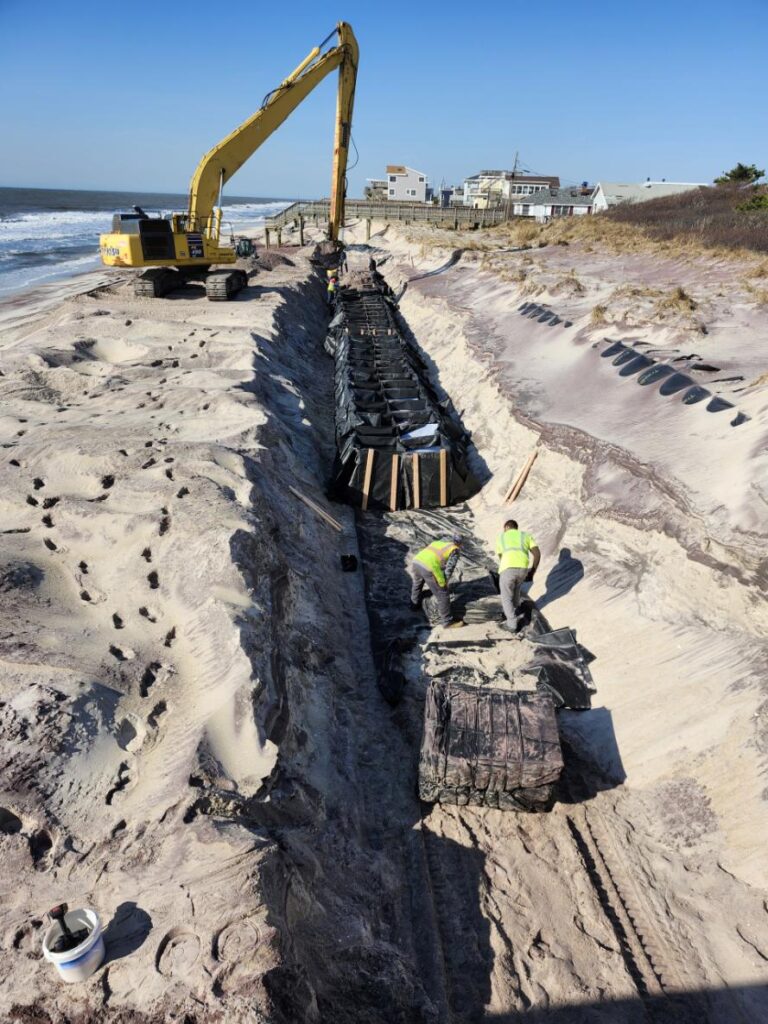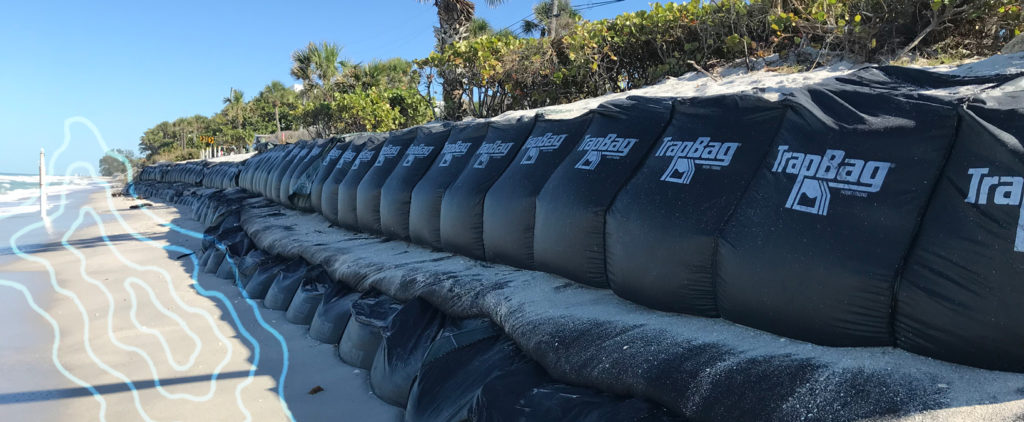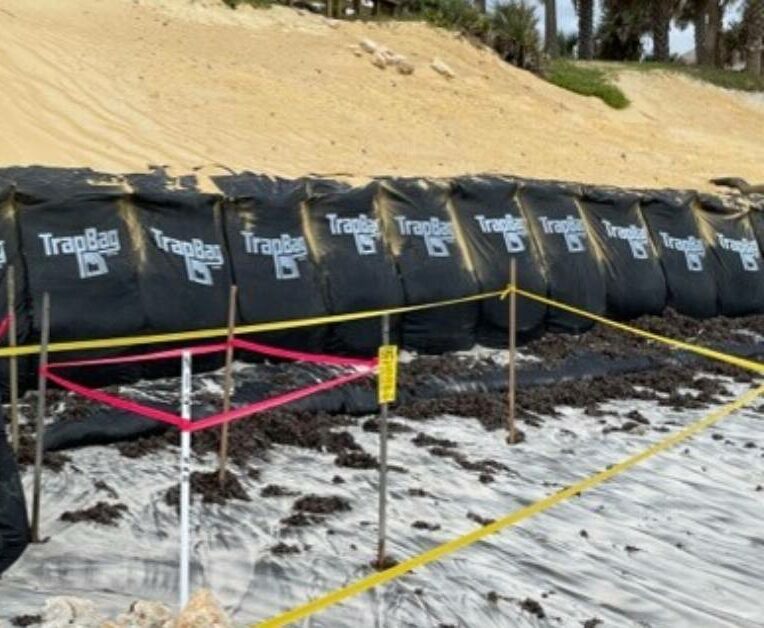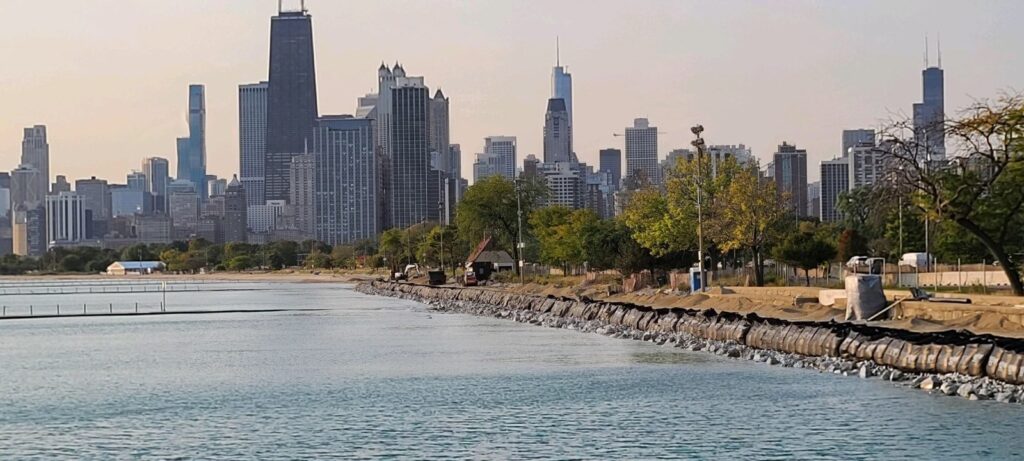Using TrapBag Erosion Control Barriers
While soil erosion is a natural process, human activity exacerbates it and worsens its effects.
TrapBag is a low-cost, rapid-deployment erosion control barrier bag similar, yet superior to, conventional sandbags. These cellular barriers take on the impacts of wave action, securing the land behind them and preventing further erosion.
How Erosion Control Bags Are Deployed
TrapBag is designed to be easy to set up in just a few simple steps:
-
Open the packaging: TrapBag barriers come folded up on a pallet. They are pulled out like an accordion and can be stretched out up to 50 linear feet per unit.
-
Place or stack the barrier where needed: Place the TrapBag erosion control barrier against the vulnerable shoreline or other areas like you would a typical erosion control blanket. You can also stack them on top of each other to protect higher areas.
-
Fill the cells: A team of two people can fill your TrapBag barriers in a matter of minutes with sand, gravel, or concrete using a skid steer or excavator.
Who We Serve
We work with organizations, municipalities, and business owners across the world to help them protect what matters most from the effects of erosion. Some of the groups we work with include:
Coastal & civil engineering
We work with coastal and civil engineering firms all over the world to protect coastal infrastructure, like highways and residential neighborhoods, from shoreline erosion.
Learn More »Environmental protection services
Environmental agencies use TrapBag to protect sand dunes, coastal wetlands, and other natural habitats from being lost to shoreline erosion.
Learn More »Marine Services
Highways, subdivisions, wastewater treatment plants, and water and sewage lines are among the structures that erosion can negatively affect along shorelines. We work with local municipalities and state agencies to protect their local infrastructure assets and reduce the need for erosion-related repairs.
Learn More »Projects
TrapBags vs. Other Erosion Control Solutions
One of the most effective ways to prevent long-term shoreline erosion is through stabilizing dunes along the beaches and planting native vegetation to help the sand stay in place. This is a project that many environmental protection agencies have taken on as it becomes clear just how essential dunes are for preventing erosion.
However, stabilizing and reintroducing sand dunes is an expensive, time-consuming process. Certain methods, such as dune nourishment and restoration, are also prone to failing due to the challenge of finding sand from other beaches that has the exact same mineral composition to prevent the sand from washing away. Fortunately, TrapBag can also be used to stabilize dune cores, making them more likely to stay in place and retain the sand around them.

Sandbags have been a go-to solution for preventing flood damage for thousands of years. They can also be used as a relatively cheap solution for erosion control by bracing them against dunes, coastal shorelines, and cliffsides.
However, with sandbags, you get what you pay for. Enough wave action can easily shred the typical sandbag, leaving the shoreline vulnerable once again. On the other hand, TrapBag can hold its ground against wave action for years, better protecting the shoreline from erosion.
Even more, sandbags are time-consuming and labor-intensive to fill, whereas filling TrapBags can take as little as under an hour with heavy machinery.
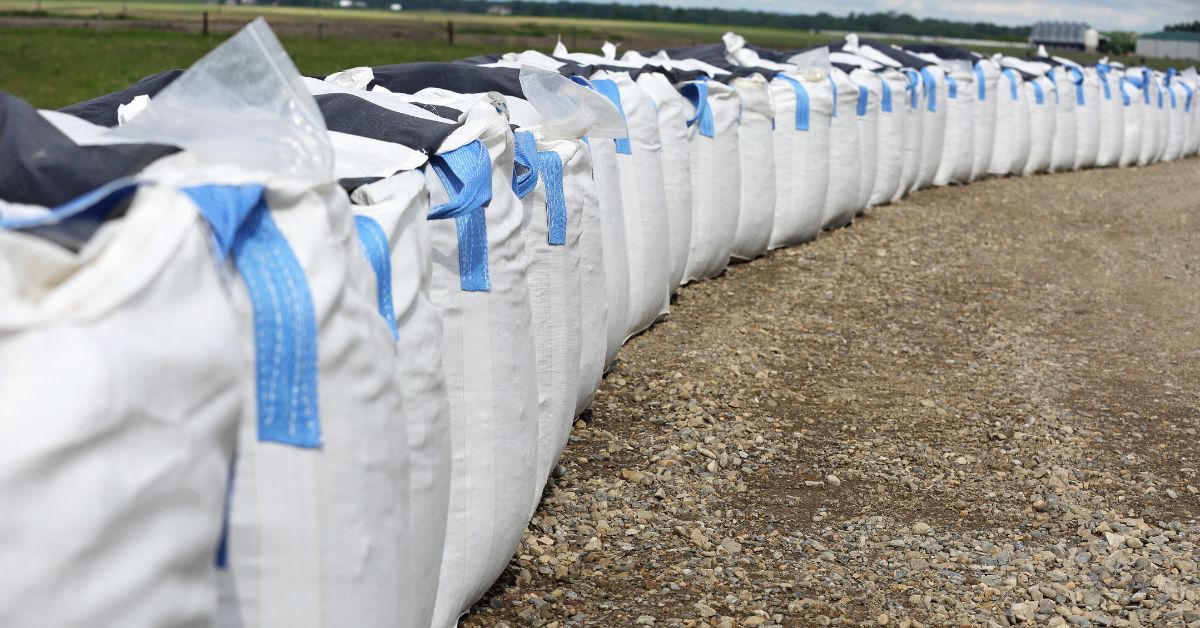
Woven silt fences are a relatively cheap, effective solution for stabilizing the land and reducing soil erosion, especially around construction sites. However, because they’re so cheap, they don’t stand up to the elements as easily and are more likely to be damaged.
TrapBag has a broader spectrum of uses, whether to prevent soil loss on job sites or keep silt from washing into rivers and lakes.
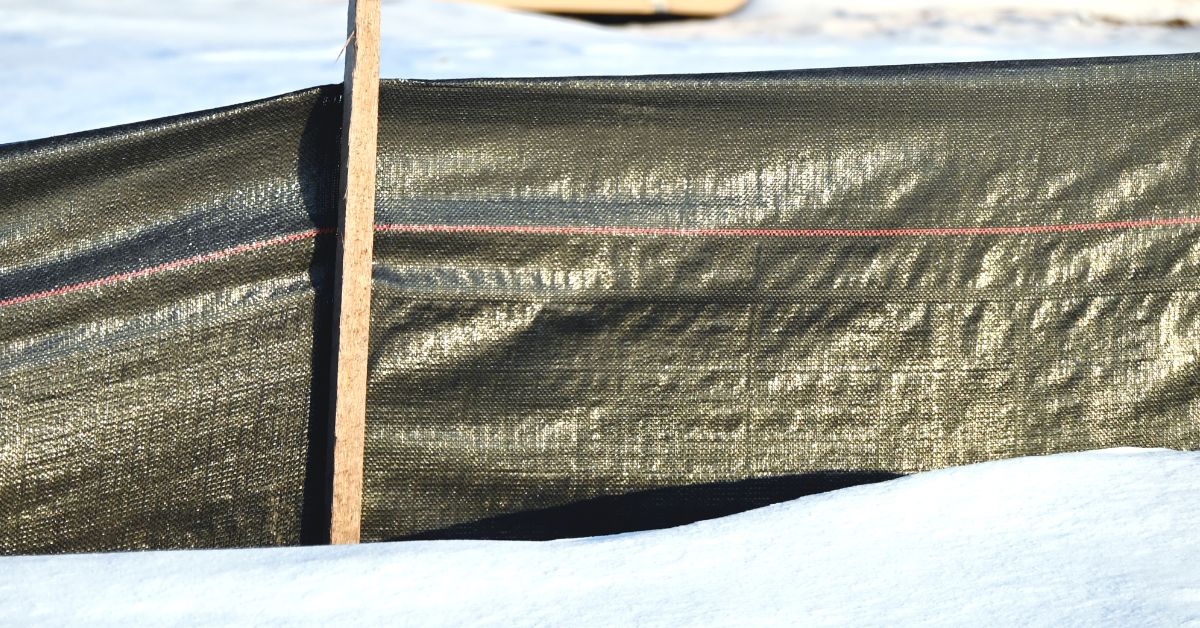
Rip rap is an assortment of stones or pieces of recycled roadway material placed along the shoreline to prevent erosion over time. This is an effective erosion control method, especially for long-term use.
However, rip rap can be quite expensive to install. We estimate installing the rocks at $300 per square yard to start, and the prices can increase substantially depending on the size you need, where the rock is coming from, and the amount of shoreline you need to cover. If you need to protect your shoreline in the short term or on a budget, TrapBag can serve as a cost-effective solution for preventing shoreline erosion.
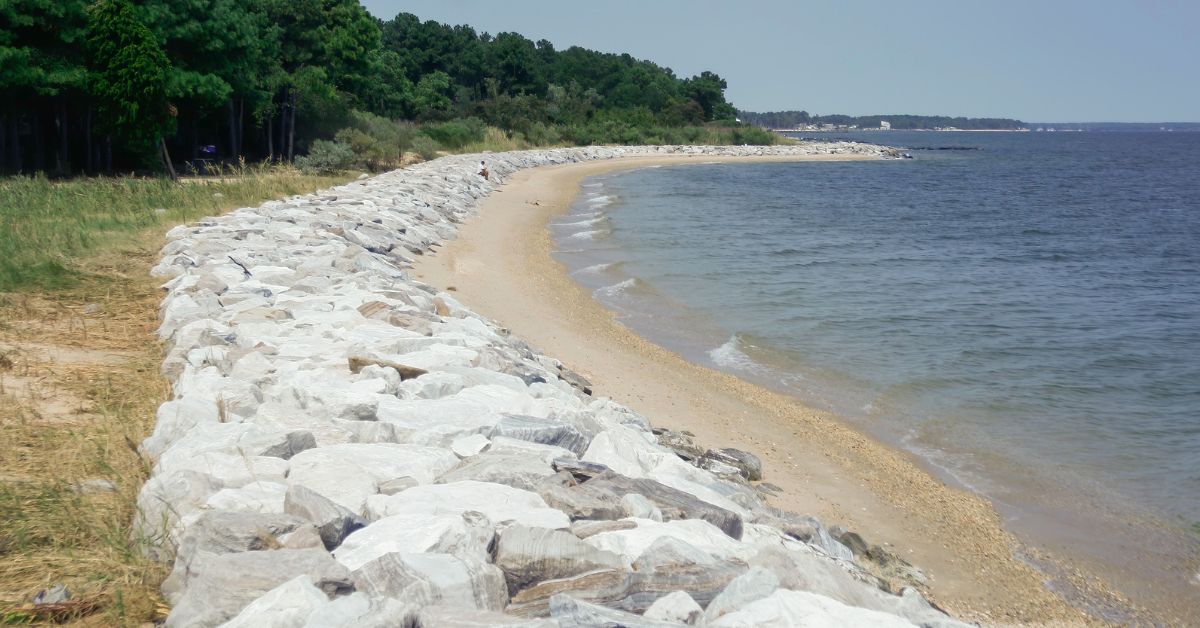
Why Choose TrapBag?
TrapBag improves on the traditional design of sandbags. We engineered these erosion control barriers with a pentagonal shape to ensure their structural integrity. The barrier is sloped on one side and upright on the other for additional structural stability. Plus, unlike traditional sandbags, TrapBag barriers have much lower margins of error—the barrier is less likely to give way than less innovative alternatives.
Even more, our staff is here to ensure our clients successfully protect their property from erosion control. We’re here to help 24/7, across multiple countries and continents.

